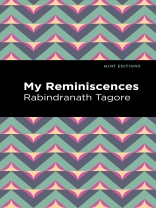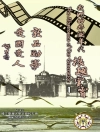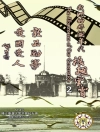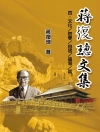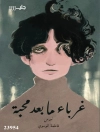My Reminiscences (1917) is a memoir by Rabindranath Tagore. Published after Tagore received the 1913 Nobel Prize in Literature, My Reminiscences contains personal reflections on the author’s youth, education, and introduction to the art of poetry. Originally published in Bengali, My Reminiscences was written by Tagore in his fiftieth year, as he prepared to embark on a journey around the world. “I know not who paints the pictures on memory’s canvas; but whoever he may be, what he is painting are pictures; by which I mean that he is not there with his brush simply to make a faithful copy of all that is happening. He takes in and leaves out according to his taste. […] In short he is painting pictures, and not writing history.” In this collection of memories, Tagore is at his philosophical, poetic best, reflecting earnestly and with ease on matters public and private. Looking back on a life at the center of Indian culture, Tagore moves fluidly and fluently from youth to young adulthood, recalling family, friends, servants, and strangers with clarity and curiosity. Afloat in his houseboat, lying on a rooftop at night, or exploring the outer limits of his mind, Tagore shares his insight with us all. This edition of Rabindranath Tagore’s My Reminiscences is a classic of Indian literature reimagined for modern readers.
Since our inception in 2020, Mint Editions has kept sustainability and innovation at the forefront of our mission. Each and every Mint Edition title gets a fresh, professionally typeset manuscript and a dazzling new cover, all while maintaining the integrity of the original book.
With thousands of titles in our collection, we aim to spotlight diverse public domain works to help them find modern audiences. Mint Editions celebrates a breadth of literary works, curated from both canonical and overlooked classics from writers around the globe.
Om författaren
Rabindranath Tagore (1861-1941) was an Indian poet, composer, philosopher, and painter from Bengal. Born to a prominent Brahmo Samaj family, Tagore was raised mostly by servants following his mother’s untimely death. His father, a leading philosopher and reformer, hosted countless artists and intellectuals at the family mansion in Calcutta, introducing his children to poets, philosophers, and musicians from a young age. Tagore avoided conventional education, instead reading voraciously and studying astronomy, science, Sanskrit, and classical Indian poetry. As a teenager, he began publishing poems and short stories in Bengali and Maithili. Following his father’s wish for him to become a barrister, Tagore read law for a brief period at University College London, where he soon turned to studying the works of Shakespeare and Thomas Browne. In 1883, Tagore returned to India to marry and manage his ancestral estates. During this time, Tagore published his Manasi (1890) poems and met the folk poet Gagan Harkara, with whom he would work to compose popular songs. In 1901, having written countless poems, plays, and short stories, Tagore founded an ashram, but his work as a spiritual leader was tragically disrupted by the deaths of his wife and two of their children, followed by his father’s death in 1905. In 1913, Tagore was awarded the Nobel Prize in Literature, making him the first lyricist and non-European to be awarded the distinction. Over the next several decades, Tagore wrote his influential novel The Home and the World (1916), toured dozens of countries, and advocated on behalf of Dalits and other oppressed peoples.
